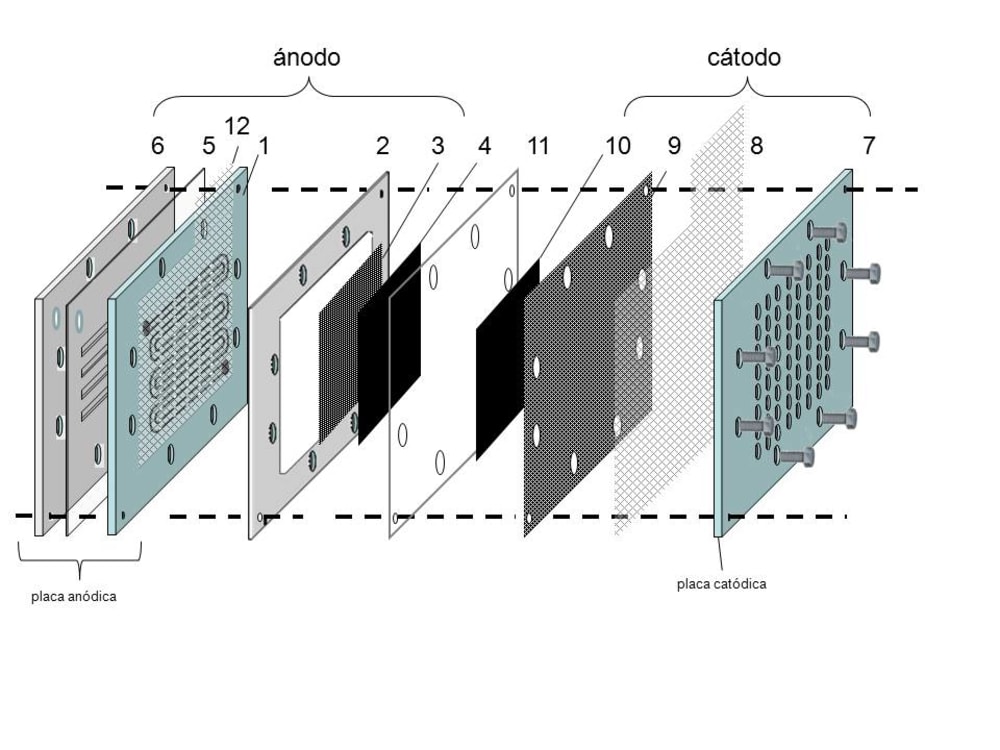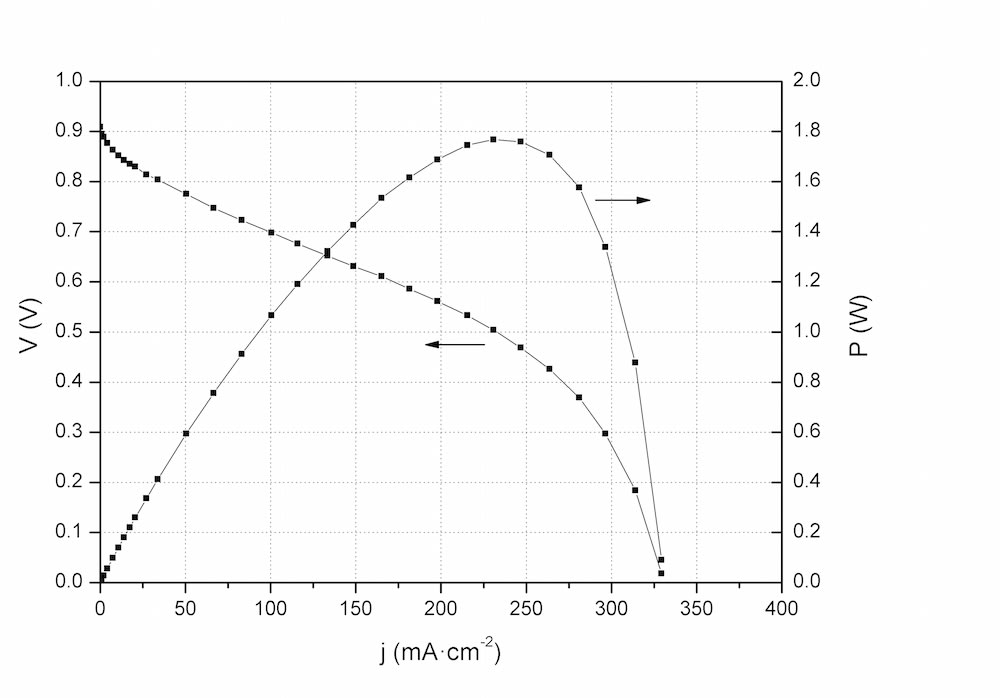Portable electricity is becoming one of the most demanded technologies since the widespread use of portable electronics over the last two decades. Devices with increasing functionability have also increasing power requirements that fall in the limit of current portable generators, ie. batteries. One solution is proposed here consisting of a fuel cell power generator working with hydrogen and ambient air, that has been modified to be able to provide maximum hydrogen-to-electricity energy conversion with minimal use of auxiliary elements to avoid extra volume, weight, and power consumption. Since hydrogen is used as stored energy, this fuel cell opens the possibility for the introduction of renewable energy consumption directly to the consumer in its daily life. Hydrogen can be generated by electrolysis with small commercial electrolyser already available in the market that can be plug-in to the electricity network or to a renewable energy source (photovoltaic panel, wind turbine…), and stored in canisters with 1-5% total weight storage density. The fuel cell with hydrogen storage system is able to attain similar weight and volume energy densities as the advanced Li-ion batteries. Devices like smartphones, computers, tablets, toys, drones,… requiring small power, like between 1W and 100W, may benefit from this hydrogen power generation solution.
The portable fuel cell consists of a new developed anode that is fully closed (no purging requirement, dead-end), but is water permeable therefore it is able to exchange water with the environment to avoid flooding. By this means, the anode converts hydrogen to electricity with 100% faradaic efficiency. The cathode is of ‘air-breathing’ type, able to react with oxygen from the ambient air without use of fans or other auxiliary elements. Fuel cell prototypes of 2W power delivery have demonstrate up to 150 mW•cm-2 power efficiency, 20W•h power autonomy with 1g H2 stored in metal-hydride canister. The device have demonstrated durability above 1000h delivering rated power. The fuel cell is made of other conventional raw materials, including carbon based electrodes with platinum catalyst (about 7mg per device, 0.3$ cost), Nafion membrane electrolyte, grid contacts, and plates. Prototypes can be built in laboratories without special requirements, and at a low material and processing costs.
Prototypes have been built and their functionability tested in portable application, like a propeller system for messages delivery (“A portable system powered with hydrogen and one single air-breathing PEM fuel cell” Applied Energy 109 (2013) 60–66.). In this case, a single cell prototype was used delivering 2W at low voltage (0.5-0.7V), that was able to power conventional electronic by means of dc-dc boost converter block. The single cell may be stacked to provide a higher voltage.
Video
Like this entry?
-
About the Entrant
- Name:Antonio Chaparro
- Type of entry:teamTeam members:Paloma Ferreira Aparicio
Antonio Martínez Chaparro - Software used for this entry:no
- Patent status:patented








